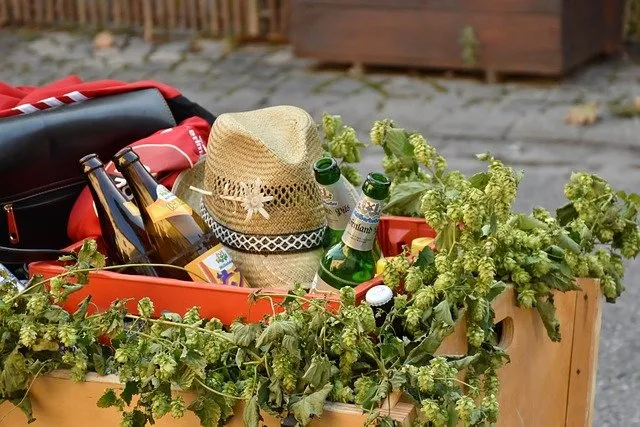Non-alcoholic beer is a great alternative for people who want to enjoy a cold one without alcohol. But does non-alcoholic beer have yeast?
In this blog post, we will discuss the role that yeast plays in the production of non-alcoholic beer, and why it is an important ingredient. We will also explore some of the different types of yeast used in the brewing process. So if you’re curious about non-alcoholic beer, be sure to read on!
Read More: The Best Low Carbonation Beer: Top 10
What Is Yeast
Yeast is a fungal microorganism that is most well-known for being used to make bread. However, it also has many other uses, particularly when it comes to brewing. Its quick reproduction rate gives the bread an airiness and causes it to rise.
Earlier, the yeast had to be bred (more on this later), but today, you can get commercial yeast from your neighborhood supermarket in a variety of forms. Fresh yeast, quick yeast, dry active yeast, bakers’ yeast, and brewers’ yeast are a few of the most popular forms of yeast you’ll encounter. Each of these varieties has a unique flavor characteristic and is used for a variety of tasks.
Does Non-Alcoholic Beer Have Yeast?
Yes, yeast is present in non-alcoholic beer. This is because yeast is required for the fermentation process that results in beer. Non-alcoholic beer contains extremely little yeast, which means it cannot generate alcohol. Therefore, non-alcoholic beer is safe for those who cannot drink alcohol due to a medical condition or who do not wish to drink alcohol.
Read More: 10 Best Low Fodmap Beers
What Else Can You Do With Yeast?
Yeast is used for a wide variety of things outside making beer and leavened bread. It can be used as a nutritional supplement, especially to boost the amount of protein in meals, and it is used to make the notorious British spread known as Marmite. It can also be used to provide carbonation to drinks like ginger ale and the well-known Finnish beverage Sima.
The presence of yeast in any alcohol should also be noted. Every alcoholic beverage needs yeast to convert sugar into ethanol, even though some alcohols have higher yeast content than others (beer has a higher yeast content than vodka, for instance).
Was The First Use Of Yeast In Bread Or Beer?
The discovery of beer and bread at roughly the same period, according to archeological data, helped humans transition from a predominantly hunter-gatherer species to one that settled down and established communities.
Read More: The Best Low Gluten Beer: Top 10
Agriculture evolved around growing grains that could be used to produce bread because they are very satisfying. Some of these grains likely went bad and fermented, which is how beer was discovered.
Europeans, however, subsisted on unleavened flatbread because the bread at that time didn’t use yeast. People didn’t realize that the yeast that gives beer its head may also be utilized to leaven bread for several more millennia.
Later, as leavened bread production became more popular, bakers tended to locate their facilities close to breweries to utilize any excess yeast produced during the brewing process.
Read More: The Best Low Sulfite Beer: Top 10
Yeast Can Trigger Allergies
Some individuals, though extremely rare, might either develop or are born with yeast allergies. Because most alcoholic beverages contain yeast, including beer, you should regrettably avoid them if you have a yeast allergy.
What Distinguishes Brewer’s Yeast From Baker’s Yeast?
A diverse group of fungi known as yeast includes many different species. While they all consume carbohydrates in the same manner and produce the same amount of ethanol, their tastes and nutrient contents vary.
Chromium, a component found in brewer’s yeast, aids with blood sugar regulation. Even though you can use them both interchangeably, brewing beer with baker’s yeast will produce undesirable tastes and high sugar content.
Commercial breweries in the Seattle region always add brewer’s yeast to their beer because of this. This is because brewer’s yeast has a milder natural flavor than baker’s yeast, making it easier to manage the flavor profile.
Frequently Asked Questions
Do Gluten-Free Beer Have Yeast?
Yes, gluten-free beer does have yeast. All beer contains yeast. Yeast is a key ingredient in the brewing process and is what helps to create carbonation in the beer. Different types of yeast can be used in brewing, but most brewers use Saccharomyces cerevisiae, which is a type of ale yeast. There are also lager yeasts, but these are not as common in gluten-free brewing. Some brewers may use a combination of both ale and lager yeasts.
Does Beer Always Have Yeast?
There is no right or wrong answer, it is simply a matter of preference. There are many different ways to make beer, and each brewery has its unique process. Some breweries use traditional methods, while others use modern methods.

